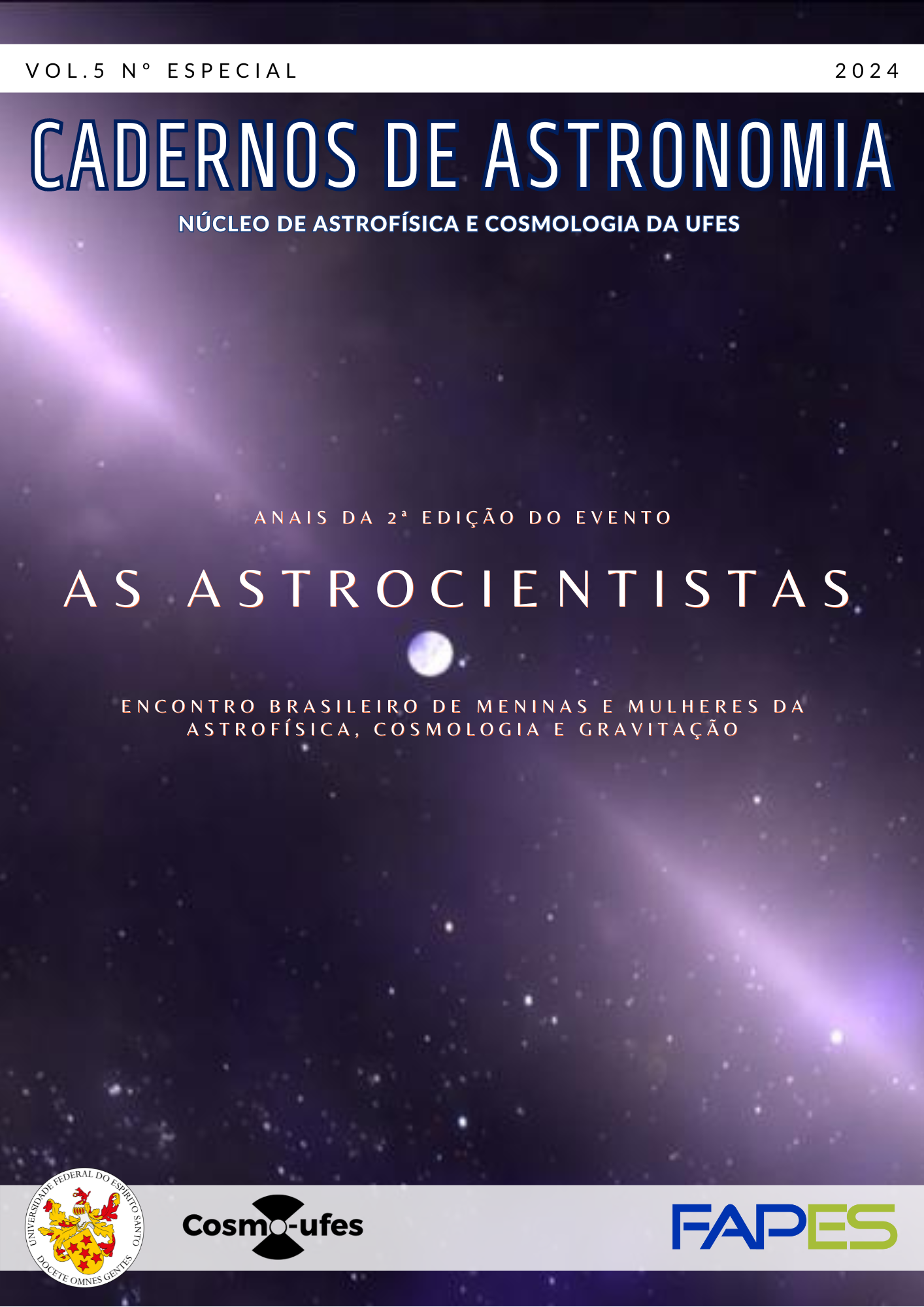Medidas de linhas de emissão com aprendizado de máquina
DOI:
https://doi.org/10.47456/Cad.Astro.v5nEspecial.44988Keywords:
Machine learning, astrophysics, galaxiesAbstract
Electronic transitions in nebula ions present in galaxies emit photons with characteristic energies, emerging from
the spectra of galaxies as emission lines. Measurements of emission line fluxes are fundamental in understanding
this physical system. For example, the equivalent width of the nebular spectral line Hα is linked to the specific
star formation rate of a galaxy and is also useful for quantifying the presence of ionized diffuse gas in galaxies.
Given that in astrophysics we work with cubes that contain thousands of spectra per galaxy, it is important
to evaluate the method used to extract the physical properties of the data, given the great computational
demand involved. To this end, the proposal of this work consisted of applying a convolutional neural network to
measure amplitude and flux obtained from Hα emission lines generated from a Gaussian function. The results
are promising and the learning is efficient. The perspective is to apply the method to data from MUSE (Multi
Unit Spectroscopic Explorer).
Downloads
References
R. Bacon et al., The MUSE second-generation VLT instrument, in Ground-based and air-borne instrumentation for Astronomy III, editado por I. S. McLean, S. K. Ramsay e H. Takami (2010), vol. 7735 de Society of Photo-Optical Instrumentation Engineers (SPIE) Conference Series, 773508. ArXiv: 2211.16795.
C. Rhea et al., A machine-learning approach to integral field unit spectroscopy observations. I. H ii region kinematics, Astrophysical Journal 901(2), 152 (2020). ArXiv:2008.08093. DOI: https://doi.org/10.3847/1538-4357/abb0e3
B. Ryden e B. M. Peterson, Foundations of astrophysics (Addison-Wesley, 2010).
S. Fabbro et al., An application of deep learning in the analysis of stellar spectra, Monthly Notices of the RAS 475(3), 2978 (2018). ArXiv:1709.09182. DOI: https://doi.org/10.1093/mnras/stx3298
Downloads
Published
How to Cite
Issue
Section
License
Copyright (c) 2024 Lis Cristine Fortes, Natalia Vale Asari

This work is licensed under a Creative Commons Attribution 4.0 International License.






